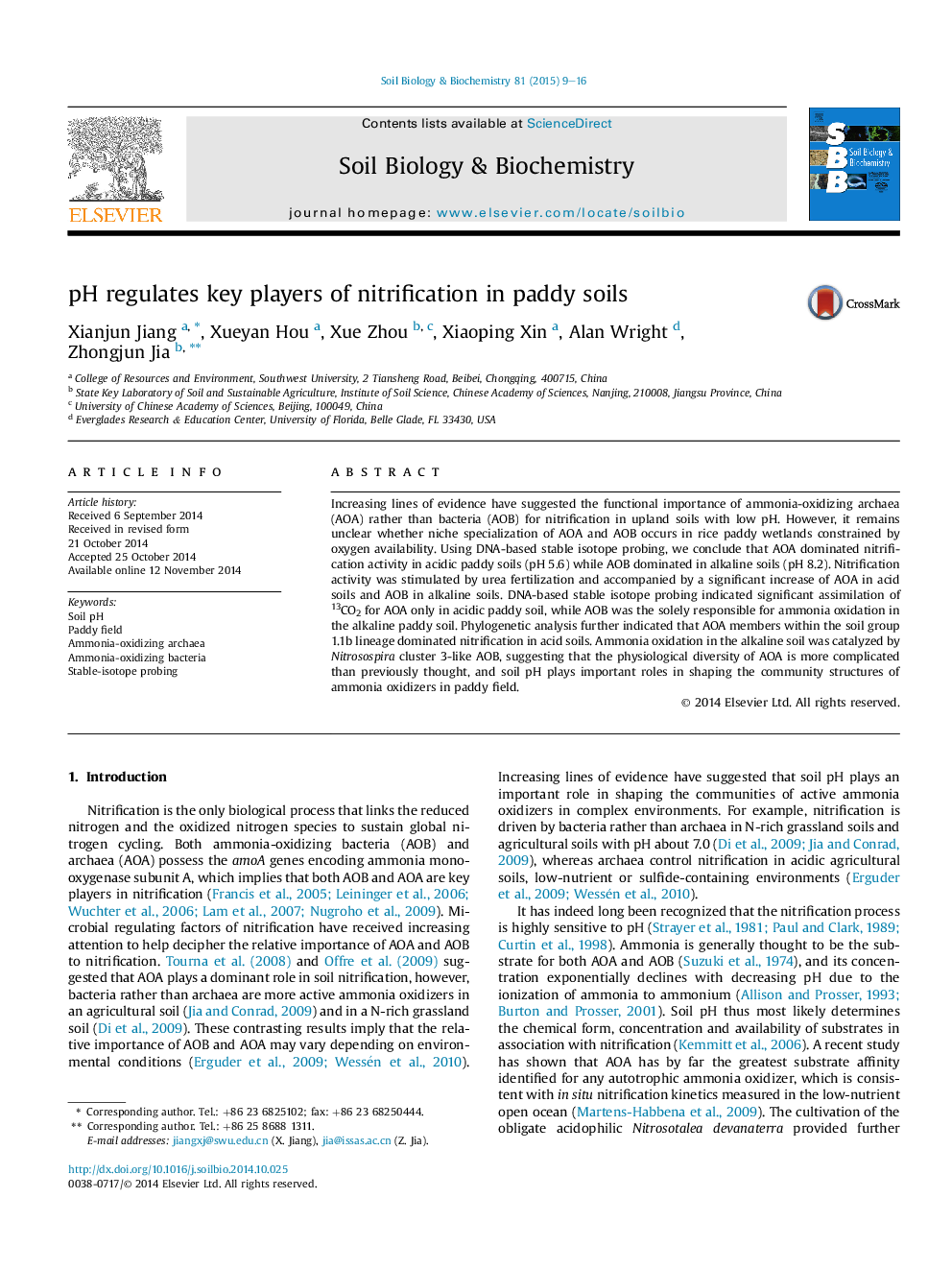| Article ID | Journal | Published Year | Pages | File Type |
|---|---|---|---|---|
| 2024408 | Soil Biology and Biochemistry | 2015 | 8 Pages |
•Archaea and bacteria dominated nitrification in acidic and alkaline paddy soils, respectively.•Soil group 1.1b lineage dominated nitrification in acidic paddy soils.•Nitrosospira cluster 3-like bacteria dominated nitrification in alkaline paddy soils.•pH plays an important role in shaping the community structures.
Increasing lines of evidence have suggested the functional importance of ammonia-oxidizing archaea (AOA) rather than bacteria (AOB) for nitrification in upland soils with low pH. However, it remains unclear whether niche specialization of AOA and AOB occurs in rice paddy wetlands constrained by oxygen availability. Using DNA-based stable isotope probing, we conclude that AOA dominated nitrification activity in acidic paddy soils (pH 5.6) while AOB dominated in alkaline soils (pH 8.2). Nitrification activity was stimulated by urea fertilization and accompanied by a significant increase of AOA in acid soils and AOB in alkaline soils. DNA-based stable isotope probing indicated significant assimilation of 13CO2 for AOA only in acidic paddy soil, while AOB was the solely responsible for ammonia oxidation in the alkaline paddy soil. Phylogenetic analysis further indicated that AOA members within the soil group 1.1b lineage dominated nitrification in acid soils. Ammonia oxidation in the alkaline soil was catalyzed by Nitrosospira cluster 3-like AOB, suggesting that the physiological diversity of AOA is more complicated than previously thought, and soil pH plays important roles in shaping the community structures of ammonia oxidizers in paddy field.
